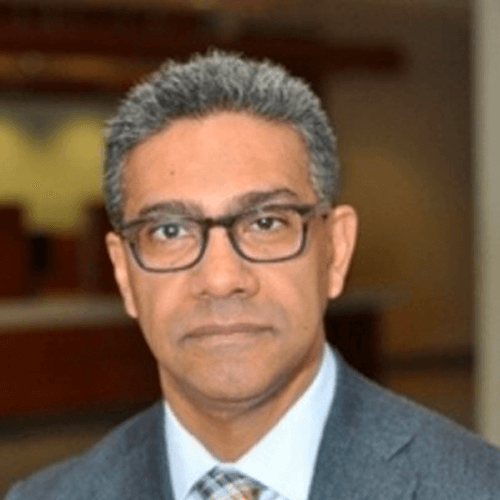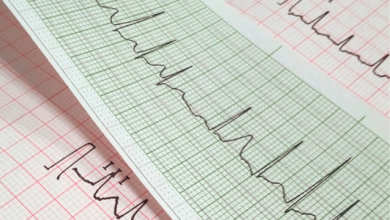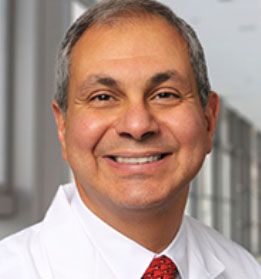Search results
Author(s):
Simon Ermakov
,
Melvin Scheinman
Added:
3 years ago
Arrhythmogenic right ventricular cardiomyopathy (ARVC) is an inherited cardiomyopathy characterised by progressive replacement of the ventricular myocardium by fibrofatty tissue.1 Patients with the disease are predisposed to ventricular arrhythmias, heart failure and sudden cardiac death.
Pathophysiology
ARVC has a strong genetic basis with most disease variants displaying an autosomal dominant…
View more
Author(s):
Mahmoud Abdelnabi
,
Ashraf Ahmed
,
Abdallah Almaghraby
,
et al
Added:
3 years ago
Ivabradine is a pure heart rate-lowering agent best characterised by its negative chronotropic effect on the sinoatrial node.1 Its unique mechanism selectively blocks the pacemaker funny (If) channels, which are responsible for spontaneous depolarisation in the sinoatrial node that regulates heart rate during sinus rhythm (Figure 1).2 Since 1980, it has been well established that controlling the…
View more
Carlos Morillo
Author
Author(s):
Farhan Shahid
,
Gregory YH Lip
Added:
3 years ago
Atrial fibrillation (AF) and heart failure (HF) are global epidemics that began more than a century ago, and their association with an ageing general population has brought about an increase in cardiovascular morbidity and rising healthcare costs.1,2 More than 50 % of patients with permanent AF have a concurrent diagnosis of HF and this proportion is expected to rise.3 It is well established that…
View more
Author(s):
Neil T Srinivasan
,
Richard Schilling
Added:
3 years ago
An estimated 180,000–300,000 sudden cardiac deaths (SCD) occur in the US annually.1,2 Worldwide, sudden and unexpected cardiac death is the most common cause of death,2 accounting for 17 million deaths every year with SCD accounting for 25% of these. The accepted definition of SCD is death that occurs within one hour of onset of symptoms in witnessed cases, and within 24 hours of last being seen…
View more
Author(s):
Jeffrey J Hsu
,
Ali Nsair
,
Jamil A Aboulhosn
,
et al
Added:
3 years ago
Monomorphic ventricular arrhythmias (MMVA) are not uncommon in athletes,1,2 yet their presence appropriately raises concern among practitioners for possible increased risk of sudden cardiac death (SCD) during sports activity and competition. While all MMVA detected in athletes warrant further evaluation,1 a majority of MMVA in this population are likely to be benign. In some instances of so…
View more
William T Abraham
Research Area(s) / Expertise:
Job title: Professor of Internal Medicine and Chief of the Division of Cardiovascular Medicine
Author
Author(s):
Frédéric Schnell
,
Nathalie Behar
,
François Carré
Added:
3 years ago
Congenital long QT syndrome (LQTS) is an inherited cardiac ion channelopathy characterised by a variable degree of QT interval prolongation on ECG and an increased susceptibility to life-threatening ventricular arrhythmias (torsades de pointes and ventricular fibrillation) in the absence of morphological cardiac disease.
LQTS is estimated to affect one in 2,000 individuals.1 It is usually…
View more
Author(s):
Pok Tin Tang
,
Duc H Do
,
Anthony C Li
,
et al
Added:
3 years ago
Ventricular arrhythmias remain a major contributor to cardiac morbidity and mortality worldwide, despite ongoing research and implementation of novel therapeutic interventions. Modern management of patients with ventricular arrhythmias requires a multidisciplinary team approach, especially in complex presentations with a background of multiple medical comorbidities.1,2 Such teams may include…
View more
Author(s):
Justine Bhar-Amato
,
William Davies
,
Sharad Agarwal
Added:
3 years ago
Ventricular tachyarrhythmias (VAs) most commonly occur early in ischaemia, and patients presenting with an acute MI and ventricular arrhythmias are a group that has a significantly increased risk of mortality.1,2 Thrombolysis primary percutaneous coronary intervention (PCI) and use of beta-blockers, while resulting in the modification of the natural history of an infarct, have also reduced the…
View more















